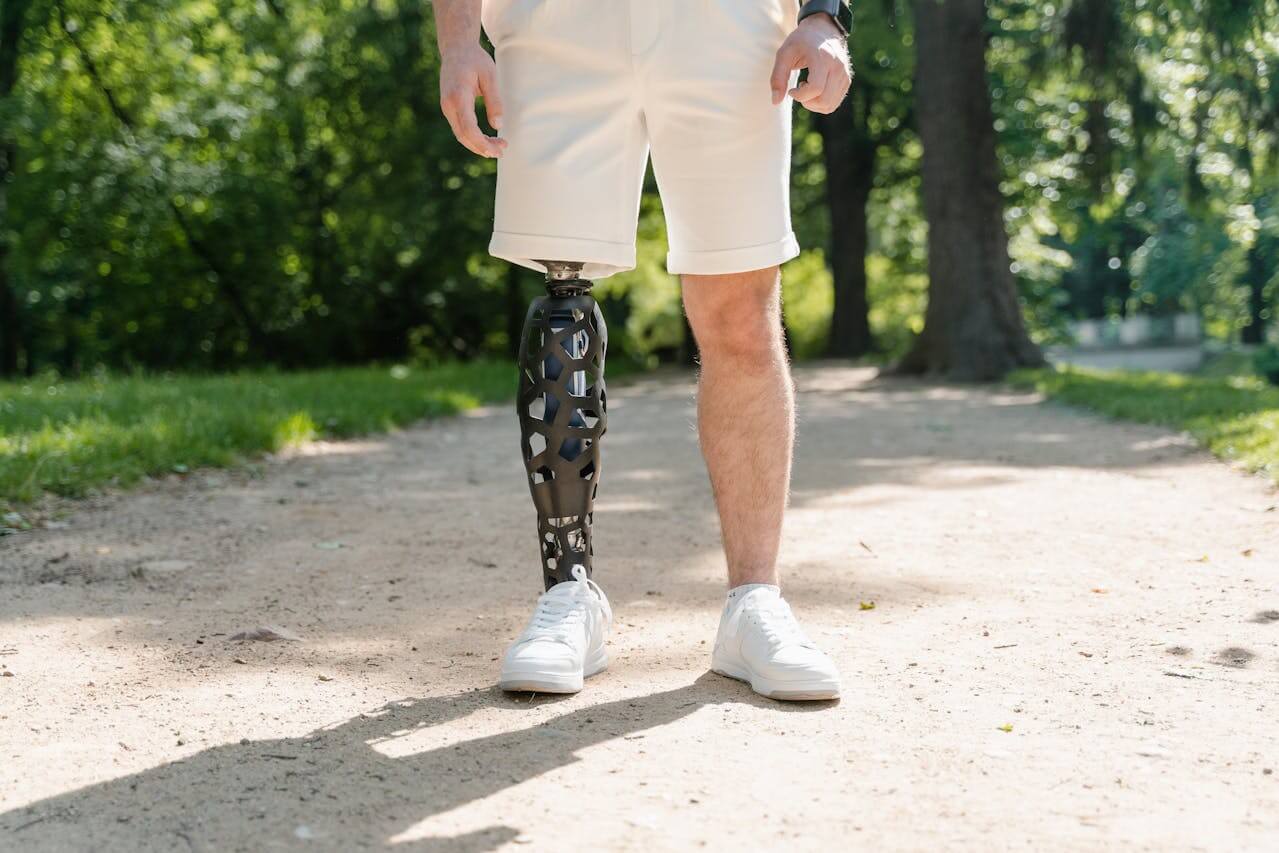Introduction
Physical fitness is crucial for everyone, including amputees. Regular exercise and stretching can improve strength, flexibility, and overall well-being. However, it’s essential to tailor workouts and stretches to accommodate the unique needs of amputees. This article explores effective workouts and stretches that can help amputees maintain their physical health, enhance mobility, and boost confidence.
Importance of Exercise and Stretching for Amputees
Exercise and stretching offer numerous benefits for amputees, including:
- Improved Mobility: Regular exercise helps maintain and improve the range of motion, making daily activities easier.
- Enhanced Strength: Strengthening muscles around the amputation site supports prosthetic use and overall body function.
- Better Balance: Targeted exercises can improve balance and coordination, reducing the risk of falls.
- Mental Health Benefits: Physical activity releases endorphins, which can help alleviate anxiety and depression, fostering a positive outlook.
- Weight Management: Maintaining a healthy weight is crucial for amputees to avoid added stress on the residual limb and prosthetic.
Pre-Workout Considerations
Before starting any workout routine, amputees should consider the following:
- Consult a Professional: Always consult a healthcare provider or physical therapist to tailor exercises to your specific needs and ensure they are safe.
- Warm-Up: A proper warm-up is essential to prepare muscles and joints for exercise, reducing the risk of injury.
- Hydration: Stay hydrated to support overall body function and performance during workouts.
- Comfortable Clothing: Wear comfortable, well-fitted clothing and ensure your prosthetic is securely attached and properly aligned.
Effective Workouts for Amputees
1. Cardiovascular Exercises
Cardiovascular workouts are essential for heart health and endurance. Amputees can benefit from various cardio exercises, including:
a. Walking
Walking is a low-impact exercise that can be easily modified for amputees. Start with short distances and gradually increase as endurance improves. Using walking poles can provide additional support and stability.
b. Cycling
Stationary bikes and hand cycles are excellent options for cardiovascular workouts. They provide a good workout for the legs or arms, depending on the type of cycle used.
c. Swimming
Swimming is a full-body workout that is gentle on the joints. It helps improve cardiovascular health, strength, and flexibility. Adaptive swimming equipment, such as fins or floats, can be used for additional support.
d. Rowing
Rowing machines provide an excellent cardio workout that engages multiple muscle groups. Amputees can modify the rowing technique to accommodate their specific needs.
2. Strength Training
Strength training is crucial for building muscle mass and supporting the prosthetic limb. Focus on exercises that target both the upper and lower body:
a. Resistance Bands
Resistance bands are versatile and can be used to perform a variety of strength training exercises. They are lightweight and portable, making them ideal for home workouts.
b. Weight Training
Weight training with dumbbells or kettlebells can help build muscle strength. Start with lighter weights and gradually increase as strength improves. Exercises like bicep curls, shoulder presses, and leg lifts are effective.
c. Bodyweight Exercises
Bodyweight exercises like push-ups, squats, and lunges can be modified to suit amputees. These exercises help build strength and improve balance.
d. Core Exercises
A strong core is vital for overall stability and balance. Exercises like seated twists, planks, and leg raises can be beneficial. Modifications may be necessary to accommodate the amputation site.
3. Flexibility and Balance Training
Flexibility and balance exercises are crucial for maintaining a good range of motion and preventing injuries:
a. Yoga
Yoga improves flexibility, strength, and balance. Adaptive yoga classes are available, or modifications can be made to traditional poses to suit individual needs.
b. Tai Chi
Tai Chi is a gentle martial art that focuses on slow, controlled movements. It helps improve balance, flexibility, and mental focus.
c. Balance Exercises
Balance exercises like standing on one leg, using a balance board, or practicing tandem walking can enhance stability and coordination.
Essential Stretches for Amputees
Stretching helps maintain flexibility, reduce muscle tension, and prevent injuries. Here are some essential stretches for amputees:
1. Hamstring Stretch
For lower limb amputees, stretching the hamstrings is crucial. Sit on the floor with the intact leg extended and the residual limb bent. Reach towards the toes of the extended leg, holding the stretch for 20-30 seconds.
2. Quadriceps Stretch
Stand and hold onto a stable surface for balance. Bend the knee of the intact leg, bringing the heel towards the buttocks. Hold the ankle with your hand and gently pull, stretching the front of the thigh. Hold for 20-30 seconds.
3. Hip Flexor Stretch
Kneel on the floor with one leg bent in front and the other leg extended behind. Push the hips forward, stretching the hip flexor of the extended leg. Hold for 20-30 seconds and switch sides.
4. Upper Body Stretch
For upper limb amputees, stretching the shoulders and chest is important. Stand with feet shoulder-width apart and interlace your fingers behind your back. Gently lift your arms, stretching the chest and shoulders. Hold for 20-30 seconds.
5. Lower Back Stretch
Sit on the floor with legs crossed. Place one hand on the floor behind you and the other hand on the opposite knee. Gently twist your torso, stretching the lower back. Hold for 20-30 seconds and switch sides.
Safety Tips
- Listen to Your Body: If you experience pain or discomfort, stop the exercise and consult a healthcare professional.
- Use Proper Form: Ensure you use the correct form to prevent injuries. A physical therapist can guide you on proper techniques.
- Modify as Needed: Adapt exercises to your comfort level and physical capabilities.
- Take Breaks: Allow adequate rest between exercises to avoid overexertion.
Conclusion
Exercise and stretching are vital for amputees to maintain physical health, improve mobility, and enhance overall well-being. By incorporating tailored cardiovascular workouts, strength training, flexibility exercises, and essential stretches into your routine, you can achieve a balanced and effective fitness regimen. Always consult with healthcare professionals to create a safe and personalized exercise plan that meets your specific needs. With dedication and the right approach, you can lead a healthy and active life.





